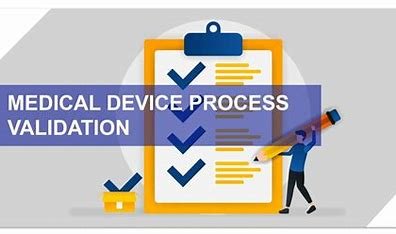Discover the critical roles of validation and verification in medical device manufacturing. Learn how these processes ensure safety, compliance, and quality throughout production.
This article aims to demystify the validation and verification process in medical device manufacturing.
Introduction
Manufacturing medical devices involves a range of activities that is precision engineered, so that you are regulated, and adhered to quality control. A single step missed in the manufacturing chain could mean compromising patient safety. This is where the validation and verification processes come in, acting as a safety net to guarantee that every medical device leaving the assembly line is safe, effective, and compliant.
Validation and Verification Explained
Validation and verification are two different but connected processes when it comes to manufacturing medical devices:
What is Validation?
This means checking to ensure a process, system or product meets its desired performance requirements. In the world of medical device manufacturing, it means that the device works as intended through out while meeting pre-defined quality and safety specs every single time.
What is Verification?
It is the process to ensure that the product meets customer requirements, system specification and design documents. Verification in medical device manufacturing ensures that the device has been designed and produced per design input requirements following per standard policies.
Importance of Validation in Medical Device Manufacturing
Ensuring Safety:
The most important aspect of medical device manufacturing is ensuring patient safety. Validation provides a level of confidence that the device works well over time, therefore validation reduces danger to patients.
Meeting Regulatory Standards:
Authorities like FDA mandate the medical device companies to validate their processes. Failure to meet validated requirements can result in the harshest outcomes as product recalls, and legal failures.
Consistency and Quality:
Validation ensures that every device produced is of the same quality. It is imperative for patient safety as well to maintain consistency and it adds value to your reputation in the market.
Risk Mitigation:
Meticulous device and process validation will allow manufacturer to catch potential failures early in the production cycle, substantially decreasing product defects or recalls.
Why Verification Is Important In Medical Device Manufacturing
Design Verification:
All medical devices must undergo design verification to guarantee that it conforms to the requirements of the design before going into production. This includes Testing and validation of the design, final testing of the device, analyzing it to see if it meets regulatory and safety specifications.
Material and component checking:
Material & components: The verification should extend to the materials and components used in medical device manufacturing. Product safety and effectiveness depend on making sure that these elements meet the required criteria.
Verification: Production Process
Manufacturing personnel must confirm that the production process of products is able to fulfil the requirements and safety parameters. This might mean equipment checks, operator checks, or process verification.
Post-Market Surveillance:
Because of the nature and complexity of the devices, manufacturers must closely keep an eye on how the device is performing out in real life and verify its safety and efficacy to address any issues that may arise in real world use for example.
The Validation & Verification Process
Validation and verification process in medical device manufacturing usually based on following steps:
Planning:
This is the stage of defining scope, goals, and verification/validation method (s)..
Protocol Development:
Specific protocols are written which detail the tests and procedures that would be covered during validation and verification.
Testing and Analysis:
Organizations must test and evaluate thoroughly their devices and processes to comply with the pre-defined requirements and regulatory standards.
Documentation:
Regulatory compliance requires extensive documentation of the validation and verification process. Records which show the testing, results, and any unexpected findings must be maintained.
Reporting and Review:
A review is taken of the validation and verification results, producing a report as evidence of compliance with any suggested corrective actions applicable.
Reach out to us today at BioBoston Consulting or browse our website for more information on how our proven experience can help your organization.


